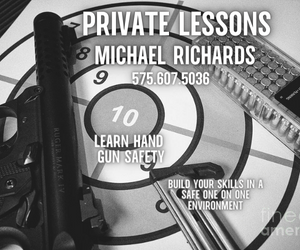As homes were evacuated yesterday because of the wildfire between Portales and Floyd, NM, it is a good time to check your emergency and evacuation preparedness. It is especially important when we are in the midst of fire season in New Mexico.
Preparation is important, safety experts say, when it comes to taking the edge off anxieties and lessening the blow if tragedy happens. It is recommended that everyone become familiar with their risks and tailor a family disaster plan with them in mind. Remember those with special needs, such as seniors or infants, and also any pets. It is also important to learn CPR (cardiopulmonary resuscitation) or basic first aid. Classes are offered in Clovis at the American Red Cross.
As the recent wildfire painfully demonstrated, emergencies can happen in an instant and get out of control just as quickly. Here are some things you can do now to prepare for emergencies you may encounter later.
How to Prepare for Trouble
What to take
(Time permitting)
- Photographs of all family members.
- Food and water (for up to seven days, if possible).
- Pets (if advance warning, take to an approved shelter).
- Pet ID tags, medications, leashes and water bowls.
- Change of clothing for each person (for one to seven days).
- Cell phones and chargers.
- Health and car insurance cards and related documents.
- Property deeds.
- Marriage license.
- Tax papers.
- Birth certificates.
- Drivers’ licenses.
- Checkbook, credit cards, cash, wallet, purse.
- Medications, including analgesics and motion sickness tablets.
- First-aid kit.
- Prescription eye wear, dentures, hearing aids.
- Jewelry.
- Irreplaceable keepsakes.
- Flashlights and Portable radio with extra batteries.
How to Prepare for an Emergency
Inside the house
- Put together an emergency kit. This includes stocking water, non-perishable foods, flashlights, a transistor radio and a fire extinguisher. Get extra batteries. Buy or create a first aid kit. See below for more information on what to include in an emergency kit.
- Purchase a high-capacity battery pack that can keep smartphones and other devices charged in the event of a power outage.
- Store things that matter most. Everything might seem important in the face of loss, but family documents are essential in the recovery process. Gather birth certificates, insurance papers and mortgage documents. Store important family photos in a box. Then store everything in one convenient place where you can grab it in an instant. Be sure to include some cash on hand also.
- Check/maintain all home smoke alarms and carbon monoxide detectors. Change batteries as needed. The National Fire Protection Association recommends replacing smoke alarms altogether every 10 years. Determine the age of ones in your home by looking at the date of the manufacturer on the back of the alarm.
- Locate where the utility connections are and learn how to shut off the gas, electricity and water if necessary.
- Clean and maintain clothes dryers (a common source of house fires). Always use a lint filter and clean it before or after a load of laundry. Make sure to clean lint around the drum also.
- Draw a diagram of your home. Plan two ways out of every room, especially the bedrooms. Fires often happen at night, when people are asleep.
- Make provisions as to how your pets will be taken from the home.
Outside the house
- Clear leaves and other debris from roofs, gutters, decks, patios or porches.
- Trim all trees near the house, particularly getting rid of overhanging branches, and cut back shrubs and bushes.
- Walk around the house and remove anything that might burn that’s within 30 feet of the structure such as old wood, etc.
- When landscaping, create a buffer around your home. Use hard, nonflammable surfaces such as tile or concrete in appropriate places. Use plants that aren’t likely to burn easily. It’s called firescaping. “While no plant is fireproof, simple firescaping can be the solution, whether it’s choosing plants with fire retardant abilities, knowing proper defensible landscape maintenance or keeping irrigation systems in excellent shape,” Gary Jones, Armstrong Garden Centers’ chief horticulturist, said in a statement. “Vegetation can either lead a fire to a structure or stop it.”

The very most important thing you can prepare for is sustenance. Even if you may not be directly affected by the impending threat, power outages are likely. Your emergency kit of food and water should be able to sustain you for 3 full days. Food should be stored in air-tight containers, and if you have canned goods stored, be sure to include a manual can opener in your kit. Here is a list of what to include in your home emergency kit:
Home Emergency Kit Essentials
- 2 quarts of water per person, per day
- Non-perishable foods that are low in salt content
- Manual Can Opener
- Flashlight(s)
- Batteries
- AM/FM Radio (battery-powered only)
- First-aid Kit
- Fire Extiguisher
- A Transistor Radio (battery-powered only)
- External Battery for Phones and other devices
- Shovel
- Pet Food (if applicable)
- Wrench or Pliers
- Dust Masks (filter your air)
- Moist Toilettes, Garbage Bags, and plastic ties (for personal sanitation)
- Complete change of clothes for each family member
- Disposable Eating Utensils
Kit Storage Locations
Since you do not know where you will be when an emergency occurs, prepare supplies for home, work and vehicles.
- Home: Keep this kit in a designated place and have it ready in case you have to leave your home quickly. Make sure all family members know where the kit is kept.
- Work: Be prepared to shelter at work for at least 24 hours. Your work kit should include food, water and other necessities like medicines, as well as comfortable walking shoes, stored in a “grab and go” case.
- Vehicle: In case you are stranded, keep a kit of emergency supplies in your car.
Maintaining Your Kit
After assembling your kit remember to maintain it so it’s ready when needed:
- Keep canned food in a cool, dry place
- Store boxed food in tightly closed plastic or metal containers
- Replace expired items as needed
- Re-think your needs every year and update your kit as your family’s needs change.
You can never be too prepared when an emergency arises. Taking the time to prepare now will save you the heartache and stress in the unfortunate event that you are faced with something disastrous.






























